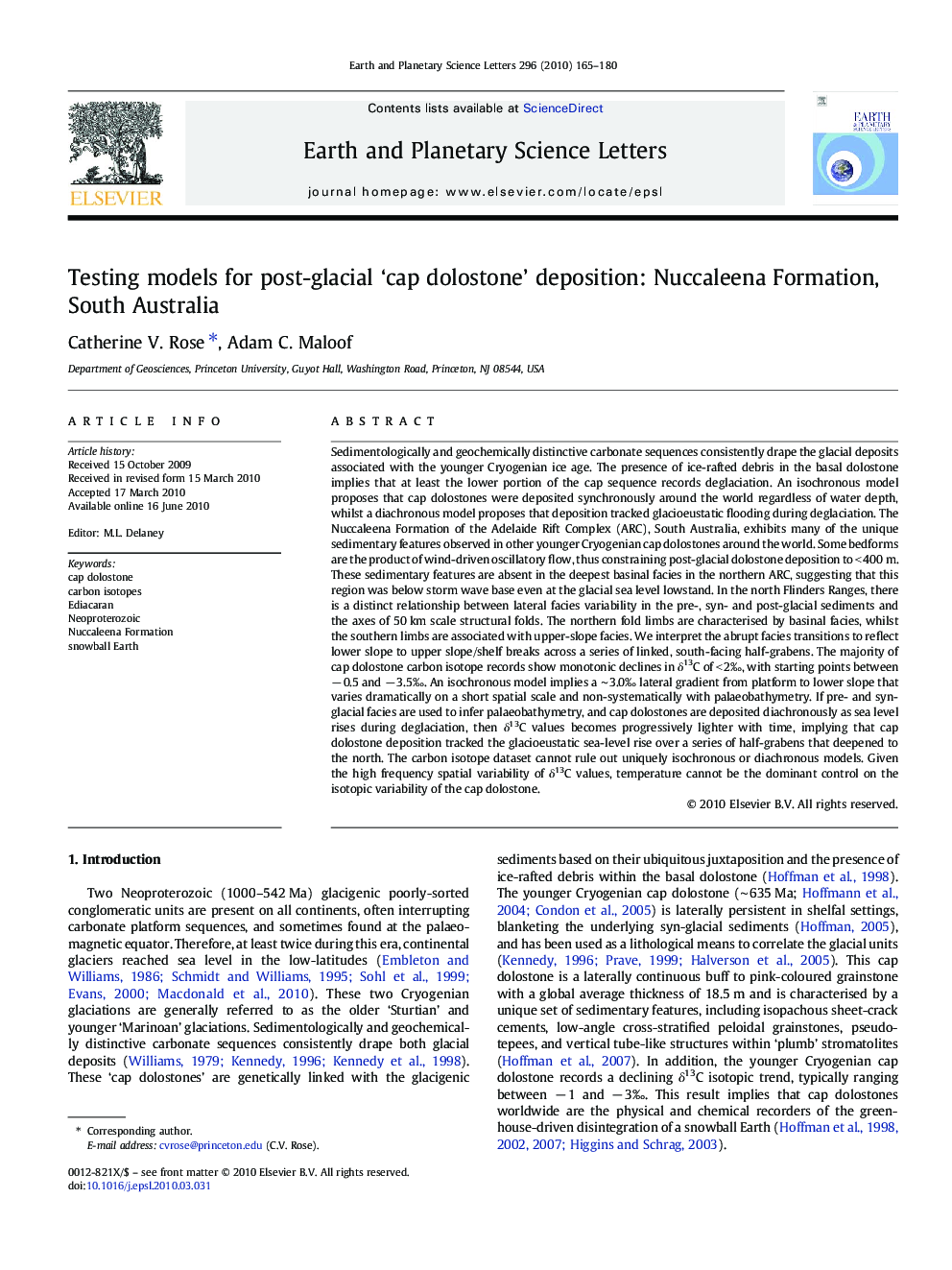| کد مقاله | کد نشریه | سال انتشار | مقاله انگلیسی | نسخه تمام متن |
|---|---|---|---|---|
| 4678427 | 1634847 | 2010 | 16 صفحه PDF | دانلود رایگان |

Sedimentologically and geochemically distinctive carbonate sequences consistently drape the glacial deposits associated with the younger Cryogenian ice age. The presence of ice-rafted debris in the basal dolostone implies that at least the lower portion of the cap sequence records deglaciation. An isochronous model proposes that cap dolostones were deposited synchronously around the world regardless of water depth, whilst a diachronous model proposes that deposition tracked glacioeustatic flooding during deglaciation. The Nuccaleena Formation of the Adelaide Rift Complex (ARC), South Australia, exhibits many of the unique sedimentary features observed in other younger Cryogenian cap dolostones around the world. Some bedforms are the product of wind-driven oscillatory flow, thus constraining post-glacial dolostone deposition to < 400 m. These sedimentary features are absent in the deepest basinal facies in the northern ARC, suggesting that this region was below storm wave base even at the glacial sea level lowstand. In the north Flinders Ranges, there is a distinct relationship between lateral facies variability in the pre-, syn- and post-glacial sediments and the axes of 50 km scale structural folds. The northern fold limbs are characterised by basinal facies, whilst the southern limbs are associated with upper-slope facies. We interpret the abrupt facies transitions to reflect lower slope to upper slope/shelf breaks across a series of linked, south-facing half-grabens. The majority of cap dolostone carbon isotope records show monotonic declines in δ13C of < 2‰, with starting points between − 0.5 and − 3.5‰. An isochronous model implies a ∼ 3.0‰ lateral gradient from platform to lower slope that varies dramatically on a short spatial scale and non-systematically with palaeobathymetry. If pre- and syn-glacial facies are used to infer palaeobathymetry, and cap dolostones are deposited diachronously as sea level rises during deglaciation, then δ13C values becomes progressively lighter with time, implying that cap dolostone deposition tracked the glacioeustatic sea-level rise over a series of half-grabens that deepened to the north. The carbon isotope dataset cannot rule out uniquely isochronous or diachronous models. Given the high frequency spatial variability of δ13C values, temperature cannot be the dominant control on the isotopic variability of the cap dolostone.
Journal: Earth and Planetary Science Letters - Volume 296, Issues 3–4, 1 August 2010, Pages 165–180